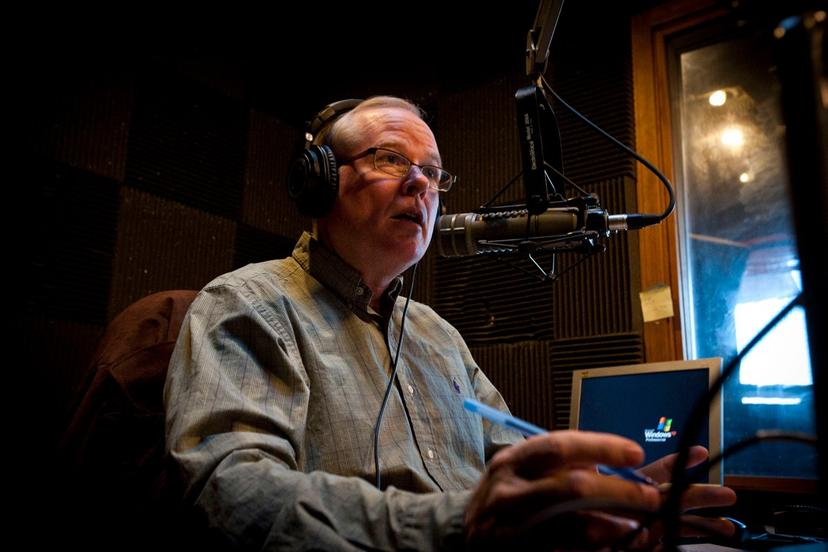Radio

Structure
The radio broadcasting industry, which includes radio broadcasting at both the local and national levels, employs more than 88,000 people. This figure also includes those who work in commercial radio as well as those employed in broadcasting headquarters (including network offices and public broadcasting stations).
Some radio industry workers, such as disc jockeys, talk show hosts, news anchors, and sportscasters, are prominent around the nation or in their local communities. Their voices and faces (through advertisements, publicity, and public appearances) are familiar to large audiences. Others work behind the scenes, putting together the many programs aired on radio on any given day. These include researchers, writers, reporters, directors, producers, and marketing experts. Broadcast engineers and technicians maintain the broadcast equipment and salespeople sell airtime to advertisers to keep the station profitable. In radio, the smallest station may employ only four or five full-time people and rely on freelance or independent producers, directors, and writers for certain projects.
Radio stations keep their programming current by using rating systems to report what people are listening to on the radio, and when. Similar to the Nielsen ratings in television, the Arbitron Company measures local U.S. radio audiences and local market consumer information. Because commercial radio stations rely on advertising revenue to stay successful, much in the broadcasting industry (scheduling, staff, and salaries) is determined by ratings.
A radio station may use the Arbitron ratings to make decisions about what kind of programming to air, the success of disc jockeys, or the additions of new components. These ratings are important to advertisers, who purchase radio time to reach specific audiences.
Even the worst program on radio or television takes up space in the air as it's transmitted along electromagnetic waves. As an attempt to keep things in order in a variety of ways, the Federal Communications Commission (FCC) was created. In 1927, Congress established the Federal Radio Commission, which in 1934 became the FCC. The FCC is involved in many aspects of broadcasting, from business matters to the content of programs. The FCC supervises and allocates air space, makes channel assignments, and licenses radio and television stations to applicants who are legally, technically, and financially qualified.
The commission also sets limits on the number of broadcasting stations that a single individual or organization can control. These limits were relaxed, however, in the mid-1980s; broadcasters today no longer need to perform as many public affairs and public service functions, the license renewal process is easier, ownership requirements are more lax, and it takes less time to buy and sell a station. In 1992, FCC regulations were relaxed even more, so a single company could own up to six stations in one city and 60 stations nationwide. Previously, an owner was limited to one AM and one FM station per city, and 12 nationwide.
The Telecommunications Act of 1996 created even more leniency by removing all limits on group size nationally. In a single market, the maximum number of stations that a broadcaster can own was increased to eight. The new legislation has paved the road for mega-radio companies to emerge with buyouts and consolidations prevalent. One of the advantages to owning a conglomerate of stations is the ability to attract advertisers with wider audiences and better rates. While advertisers may applaud this new trend, it presents challenges for small-time radio stations that find it difficult to compete with large conglomerates.
In the early 1990s, Sirius Satellite Radio pioneered a new type of radio service, which ultimately launched in 2002 and delivered via satellites to listeners who purchased special equipment and subscribed to programming. Although a competitor to broadcast radio, satellite radio employs many of the same types of workers, and Sirius even lured top shock-jock Howard Stern to its service in a multimillion dollar contract that put him on air exclusively with Sirius in 2006, boosting subscribers from about 700,000 to around 6 million. In 2007, Sirius merged with competitor XM to form SiriusXM Radio. This merger has proven to be an extremely successful business move on both parts.
Radio is now also available online. Most radio stations offer their broadcasts and special programming streaming via their Web site, and several Internet radio services—Pandora, Slacker, Spotify—have become popular alternatives to traditional broadcast stations. Although these Internet stations rely on advertising revenue like traditional broadcasters, they offer listeners a more customizable audio experience. The largest of these services is Pandora, however, Spotify has been gaining in popularity and is expected to have more listeners than Pandora within the next few years.
